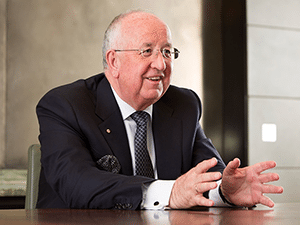
[miningmx.com] – HAVING promised to halve expansionary capital expenditure in three years to $8bn by 2015, it seems odd that Rio Tinto’s Sam Walsh should let the trumpets bray over a $20bn Simandou iron ore investment in Guinea, the west African country without a mining code.
Yet that seems to be the import of a framework agreement signed this week between the Anglo-Australian firm, the World Bank’s International Finance Corporation (IFC), and Chinese aluminium company Chinalco, which is Rio Tinto’s largest shareholder.
Given that 2013 was supposed to be a new era of dividends and yield for mining investors, how does adding another 100 million tonnes (mt) to a currently over-fed iron ore market compute?
The fear is that capital discipline as already run its course; that Simandou is a return to the good, bad old days when diversified mining firms presided over growth at all costs. From 2005 to 2012, the major miners spent $348bn in capital expenditure for a return of $126bn in net cash.
However, the investment in Simandou is not quite what it seems.
Firstly, Rio Tinto is not expected to commit to the infrastructure spend that accounts for about $13.5bn of the $20bn Simandou investment. That outlay, which pays for a 650km railway and a deep water harbour, belongs to Chinese infrastructure funds, analysts say.
Secondly, Rio Tinto’s 46.6% share of the project may be diluted as there’s a provision allowing the Guinea government to lift its stake to about 30% of the total project, although the first 7.5% is free (not free carry, just free). This would allow Rio Tinto to recoup some capital already spent at the site, estimated by one analyst at $2bn.
Then there’s political debts to pay. Rio Tinto’s involvement in Simandou dates back to a co-operation agreement signed with Chinalco following those troublesome days when the two companies nearly merged.
The merger was to help Rio Tinto out of balance sheet muddle, but Rio Tinto eventually opted for a rights issue instead. It’s no coincidence that two Rio Tinto employees in Beijing were subsequently arrested on allegations of commercial espionage, an analyst says.
Since then, the relationship between the two companies has been one of repair. In 2013, the two signed a technology share agreement for instance. Simandou furthers this understanding.
There are some sound commercial reasons for the framework agreement too. It crystallises Rio Tinto’s optionality in a resource that compares in quality to Western Australia’s famed Pibara iron ore region. “You would want a stake in an asset that in 20 years time is the premier iron ore mine,’ says an analyst.
The framework agreement also provides guarantees on timing. A year is given for a feasibility study; 18 months for a finance plan; 36 months for the finance to be locked in place. There are also agreements on who pays what to whom in the event of a project shareholder developing cold feet.
“Rio Tinto doesn’t want to be spending billions in Guinea when it has a perfectly serviceable brownfields expansion programme back in the Pilbara. The framework agreement protects its investment by making sure no other competitors enter what will surely be an enormously good iron ore asset,’ an analyst says.











